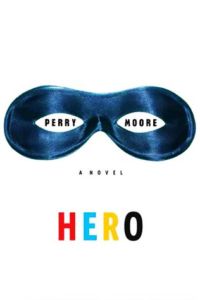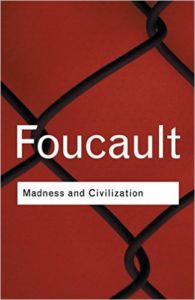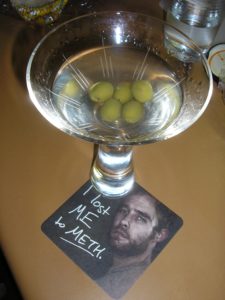This is why I do what I do
Today is the first Harvey Milk Day. After a long battle, and probably only because the film Milk gave Milk so much new publicity, which in turn (probably) led President Obama to award Milk a posthumous Presidential Medal of Freedom, our governor signed Mark Leno’s bill making Harvey Milk’s birthday a state holiday “day of recognition.” It’s not like Martin Luther King, Jr.’s birthday or Cesar Chavez’s; schools and state agencies aren’t shut down. And the law, SB-572, simply “encourage[s] public schools and educational institutions to conduct suitable commemorative exercises on that date.” Whatever that means. Well, it means that if you live in a county whose school board is run by anti-intellectual bigots, you’ll never learn about Harvey Milk.
Anyway.
This week, ABC News did a segment of their “What Would You Do?” series on anti-gay harassment. They put some actors in a diner in Sheepshead Bay, Brooklyn, and had them act out an egregious display of homophobia: A bigoted and hostile waiter told gay a couple and their kids that they were abnormal, wrong, gross, and then asked them to leave. They did the scene with both a lesbian couple and a gay male couple. And ABC had set up a hidden camera to see who would intervene. Some did, and wonderfully. The vast majority did nothing: “It’s none of my business.”
As I watched the first of these videos, I burst into tears, because of the callous disregard for the cruelty on display and the very weak responses from those who bothered to speak up. And then I continued crying during the second video, which shows some powerful interventions, one from a very righteous young man (who was suffering from nicotine withdrawal, but still) and one from the son of Holocaust survivors.
The videos bring up some interesting issues, to say the least. One is that, well, ABC News did not hide their pro-gay standpoint. The explicit assumption of John Quinones’s narration, editing, and choice of expert analysis is that the people who intervened are good and those who did not are bad. The first person who intervened was praised, and then ABC showed that he was still rather homophobic in a scathing gotcha moment. ABC News is right to be boldly declaring their position against anti-gay discrimination. I think that, like all people, journalists have an ethical duty to support human rights and human dignity. This does not mean that journalists should report with bias on all things, but rather that there are some things about which they should have a bias. They should be biased against racism, sexism, homophobia, violence, and cruelty. What is particularly heartening is that three decades after Harvey Milk was assassinated, that sort of bias — good, moral bias — is pervasive across much of the mainstream news media. Hooray for secular intellectuals.
However, of the 100 people who witnessed these scenes, only 12 spoke up. While this is probably 9 or 10 more people that would have spoken up during when Milk was in office — and yay for that — it’s still an appallingly low number. Now, I’m sure that even if it was an explicitly racist scene, less than half of the people would have said anything. After all, this is the city (and the country) of Kitty Genovese. But even if we can get half of Americans to be in favor of banning certain types of anti-gay discrimination — averaging out those who favor ENDA, oppose DADT, and are in favor of same sex marriage — actively and selflessly defending gays and lesbians is another thing entirely. There are well over a hundred million people in this country who don’t give a flying fuck about our rights and our oppression.
To wit: Earlier this week, the governor of Minnesota and future presidential candidate Tim Pawlenty vetoed a bill that would give same-sex partners the right to make burial decisions for their deceased spouses. He’s quoted in The Minnesota Independent:
Pawlenty said the bill “addresses a nonexistent problem” saying that same-sex couple must simply draw up the appropriate paperwork. He also said that a “surviving domestic partner” should not be “afforded the same legal recognition” as a spouse.
“Marriage — as defined as between a man and a woman — should remain elevated in our society at a special level, as it traditionally has been,” said Pawlenty in his veto message. “I oppose efforts to treat domestic relationships as the equivalent of traditional marriage.”
Yes, thirty years after Harvey Milk was assassinated, it’s both politically expedient and morally upright to insult and denigrate gay and lesbian couples at their most trying time. Thirty years later, a hateful bigot is governor of Minnesota and a viable presidential candidate. (At least the hateful bigots who run Arizona and used to run Alaska are not considered serious national politicians by other serious national politicians.) He believes that the Bible — or rather, select passages of the Bible as interpreted by other hateful bigots — should govern our actions. He believes that it’s okay to hurt minorities in order to gain popularity among other hateful bigots who he needs in his quest for power. Thirty years after Milk’s death, people vote for people like Pawlenty all of the time.
 And then there was the sad story of Dr. Jonathan I. Katz. President Obama, via the Department of Energy, had appointed Katz to the team of researchers and government scientists who are charged with figuring out how to stop the epic oil leak in the Gulf of Mexico. Katz, a physics professor at Washington University in St. Louis, is more hateful than Tim Pawlenty by several orders of magnitude. He is the author of the essay titled “In Defense of Homophobia,” in which he writes about the “innocent” people who died of AIDS, “These people died so the sodomites could feel good about themselves.” This a rather standard, if despicable, trope, but he makes a new (or new to me) argument is in a postscript he wrote:
And then there was the sad story of Dr. Jonathan I. Katz. President Obama, via the Department of Energy, had appointed Katz to the team of researchers and government scientists who are charged with figuring out how to stop the epic oil leak in the Gulf of Mexico. Katz, a physics professor at Washington University in St. Louis, is more hateful than Tim Pawlenty by several orders of magnitude. He is the author of the essay titled “In Defense of Homophobia,” in which he writes about the “innocent” people who died of AIDS, “These people died so the sodomites could feel good about themselves.” This a rather standard, if despicable, trope, but he makes a new (or new to me) argument is in a postscript he wrote:
Post-Script October 9, 2005: In recent weeks this essay has been the subject of controversy at, and even beyond, Washington University (see, for example, recent issues of Student Life). A number of critics have asked if monogamous homosexuals are also culpable. Quite apart from the question of the definition of monogamous (sexual contact with only one person in a lifetime? serial monogamy? some cheating? etc.), I suggest the following analogy: A man joins the Ku Klux Klan. He is not violent, and would never hurt a fly; he just wants a safe place to express his racist feelings. Is he culpable for the Klan’s past acts of violence? I believe that even though he is not criminally responsible for acts that occurred before he joined, he is morally culpable for joining the Klan. The Klan has blood on its hands, and anyone who joins must share the guilt. So, too, with the homosexual movement.
Yes, Katz claims that being gay is like being in the KKK. This man is a famed scientist, and he wrote an essay using logic that wouldn’t pass muster in a first-year comp class. His use of evidence, or lack thereof, wouldn’t pass muster in a junior high comp class. And morality would only pass muster in, well, the KKK.
In his petition against Katz’s appointment, John Aravosis made a very good point:
President Obama would never appoint a “proud racist” or a “proud anti-Semite” to a panel of experts, and showcase him as one of the best minds in our country, and he shouldn’t appoint a proud homophobe either.
After reading Katz’s essay and John’s comments, I felt physically ill. I cannot believe that no one googled Katz before appointing him, so at least someone in the Obama Administration decided that his bigotry was irrelevant. (And they also weren’t bothered by the fact that he’s against doing anything to stop climate change, which is perhaps even stranger.) And this is depressing in a stomach-churning way. For while the outcry against Katz from the gay left got him fired from the commission, it took outcry to do it.
But that’s what outcry is for. That’s what teaching about homophobia is for. This is why we tell our stories, and march, and vote. And pass along videos like the ones I’ve posted here. And why we intervene, because one person intervening is better and than none, and one person intervening will lead to more people intervening. Or that’s the hope anyway.







